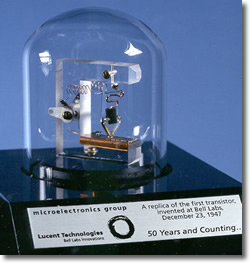

While working at Cambridge University, England in 1934, German electrical engineer and inventor Oskar Heil filed a patent on controlling current flow in a semiconductor via capacitive coupling at an electrode – essentially a field-effect transistor. German scientists also contributed to this early research.

Lilienfeld (1882 –1963), Courtesy of AIP Emilio Segre Visual Archives His patent, however, had sufficient resemblance to the later field effect transistor to deny future patent applications for that structure. Lilienfeld is credited with inventing the electrolytic capacitor but there is no evidence that he built a working amplifier. Lilienfeld, moved to the US and in 1926 filed a patent for a “Method and Apparatus for Controlling Electric Currents” in which he described a three-electrode amplifying device using copper-sulfide semiconductor material. His work is largely unknown.Īustro-Hungarian physicist, Julius E. Although Losev experimented with the material in radio circuits for years, he died in the 1942 Siege of Leningrad and was unable to advocate for his place in history. In 1922-23 Russian engineer Oleg Losev of the Nizhegorod Radio Laboratory, Leningrad, found that a special mode of operation in a point-contact zincite (ZnO) crystal diode supported signal amplification up to 5 MHz. Some of the earliest work on semiconductor amplifiers emerged from Eastern Europe. By the 1920’s inventors began to investigate the use of semiconductors for amplifying and switching signals. These point-contact diodes could change an oscillating signal to a steady signal and found wide use as detectors in crystal radio receivers. And as this blog describes, it was repeated in the development of the next great leap forward in semiconductor devices, the transistor.Įarly in the last century scientists knew how to make a two terminal diode by placing a sharp metal probe in contact with a semiconductor crystal. Merton also paraphrases Bacon’s observation that “once the right path is followed, discoveries in limitless number will arise from the growing stock of knowledge.” This pattern was readily apparent in the history of the diode.

Merton, traces this understanding back to Elizabethan philosopher, statesman, and scientist Sir Francis Bacon. On reading my recent blog “ Who invented the diode?” CHM senior curator Dag Spicer pointed me to a fascinating scholarly treatise, “Singletons and Multiples in Scientific Discovery: A Chapter in the Sociology of Science,” that describes how multiple independent discoveries of scientific phenomena are the norm rather than the exception.


 0 kommentar(er)
0 kommentar(er)
